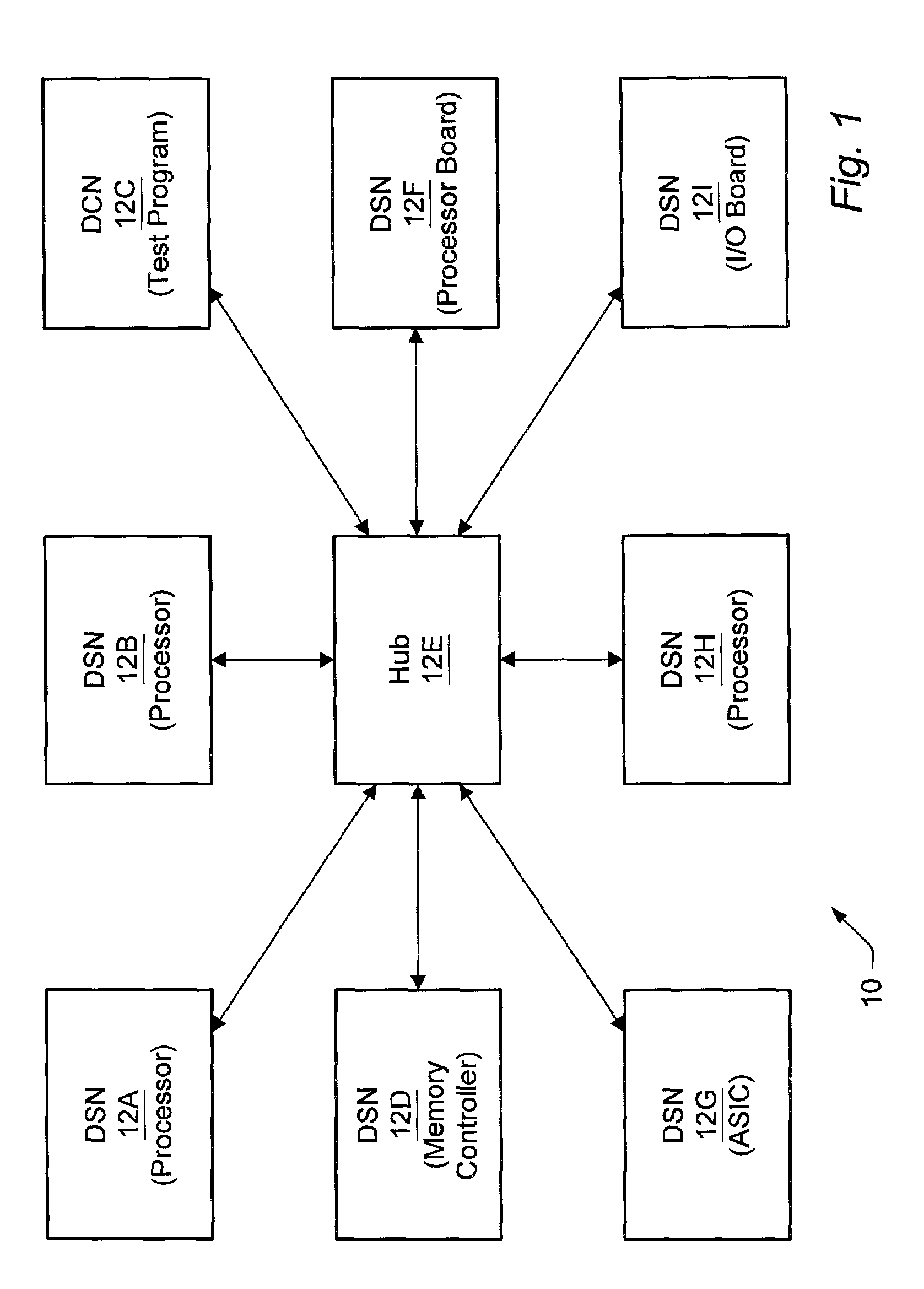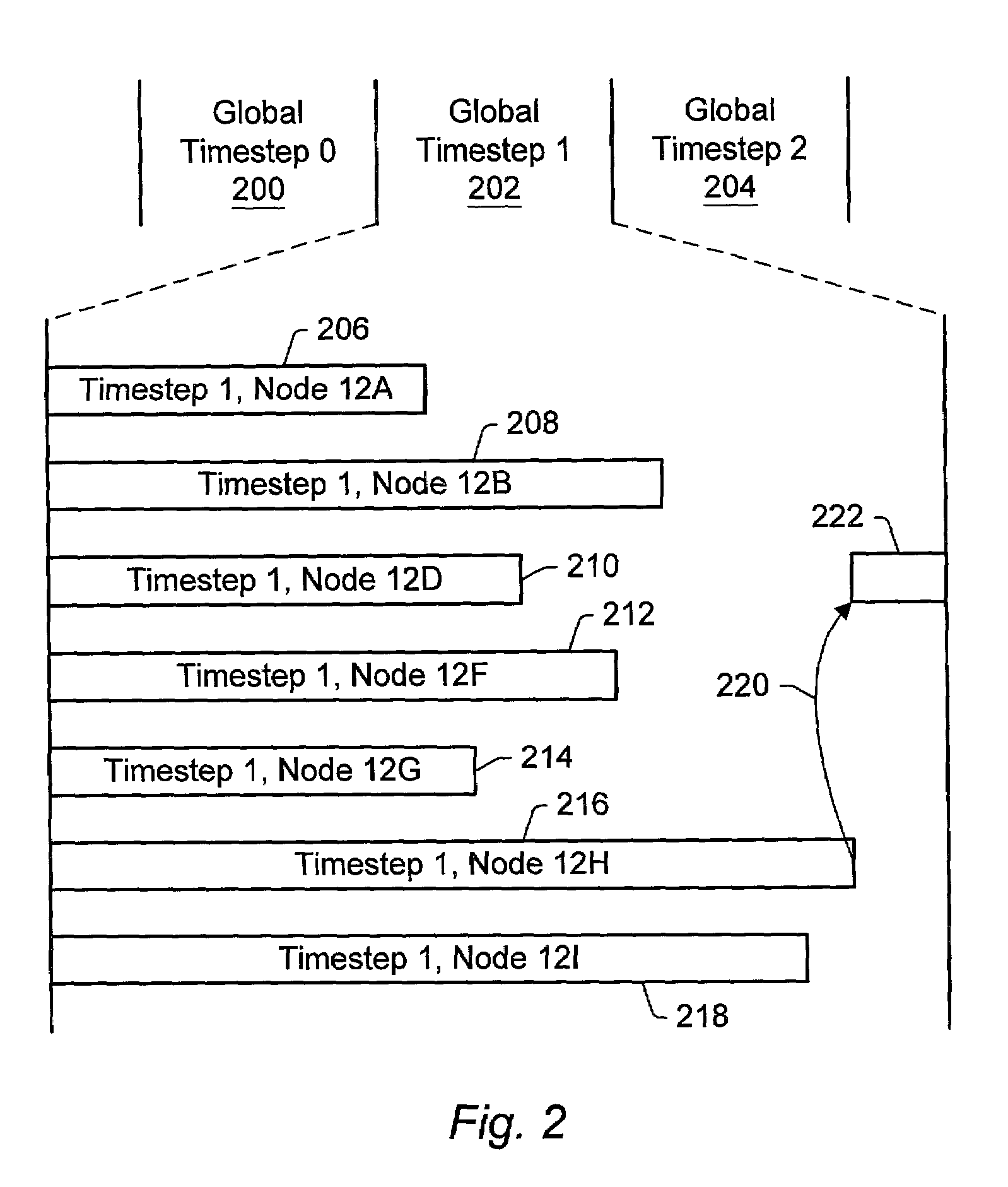Synchronization of distributed simulation nodes by keeping timestep schedulers in lockstep
a distributed simulation and lockstep technology, applied in the direction of pulse amplitude modulation, cad circuit design, instruments, etc., can solve the problem that single-system simulation has become less desirabl
- Summary
- Abstract
- Description
- Claims
- Application Information
AI Technical Summary
Benefits of technology
Problems solved by technology
Method used
Image
Examples
second embodiment
A Zero-Time and Real-Time Phases of a Timestep
[0075]Turning next to FIGS. 8–13, a second embodiment of the distributed simulation system 10 in which a timestep includes at least two phases is shown. Each of the phases may be synchronized among the nodes in a manner similar to the above description. Additionally, exiting one of the phases (the last within the timestep) also results in exiting the timestep. Accordingly, the synchronization of timestep transitions may coincide with the synchronizing of one of the phase transitions.
[0076]In the embodiment described below, the NOP command is used by the DSNs to indicate that no communication is desired by the node. Accordingly, the NOP command may be an example of the local timestep complete command for the embodiment below. Similarly, the NOP command may be used as the “phase complete” command for phase synchronization. Two commands are defined to control the transition out of a phase (real time done, or RT_Done, and zero time done, or...
PUM
 Login to View More
Login to View More Abstract
Description
Claims
Application Information
 Login to View More
Login to View More - R&D
- Intellectual Property
- Life Sciences
- Materials
- Tech Scout
- Unparalleled Data Quality
- Higher Quality Content
- 60% Fewer Hallucinations
Browse by: Latest US Patents, China's latest patents, Technical Efficacy Thesaurus, Application Domain, Technology Topic, Popular Technical Reports.
© 2025 PatSnap. All rights reserved.Legal|Privacy policy|Modern Slavery Act Transparency Statement|Sitemap|About US| Contact US: help@patsnap.com



